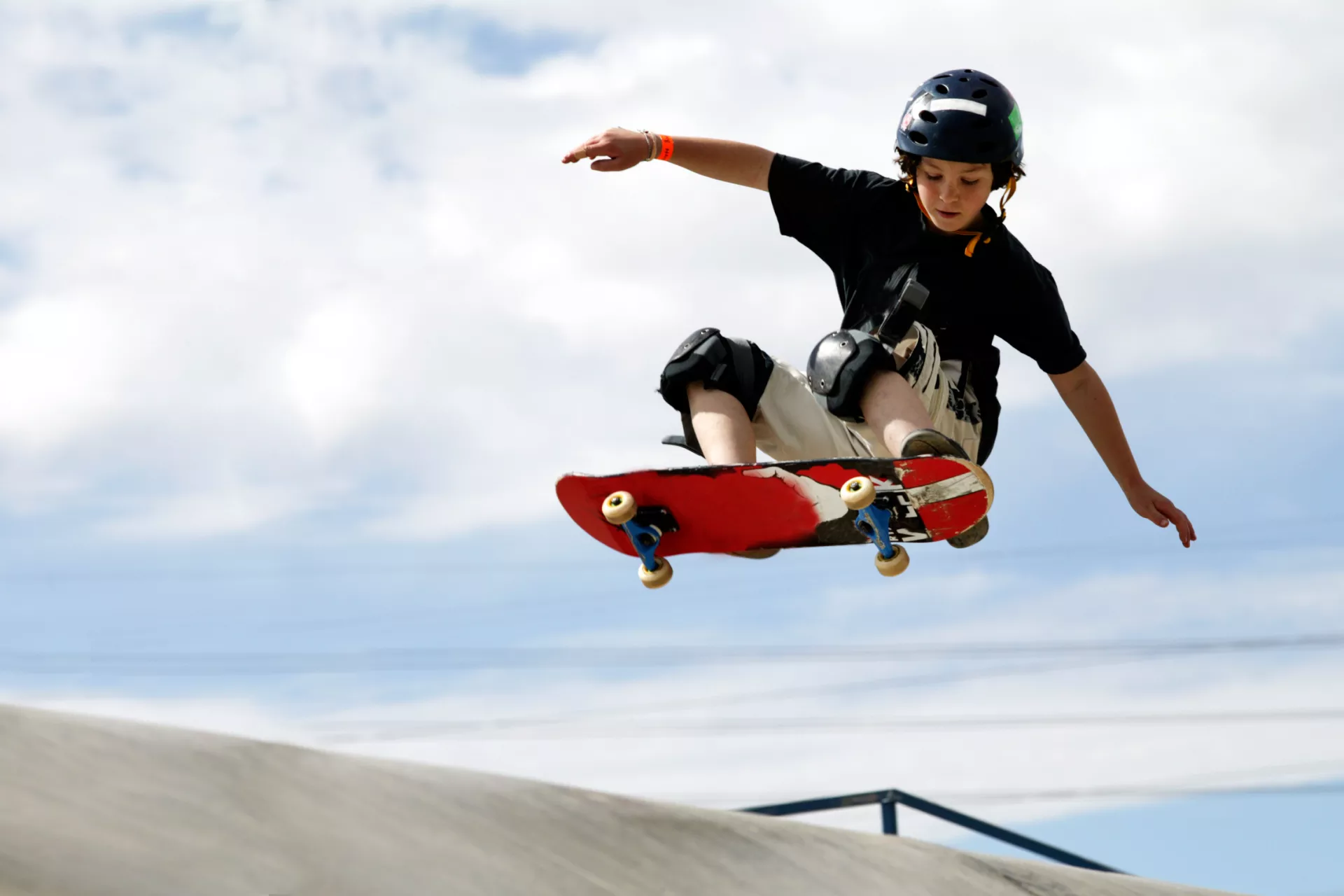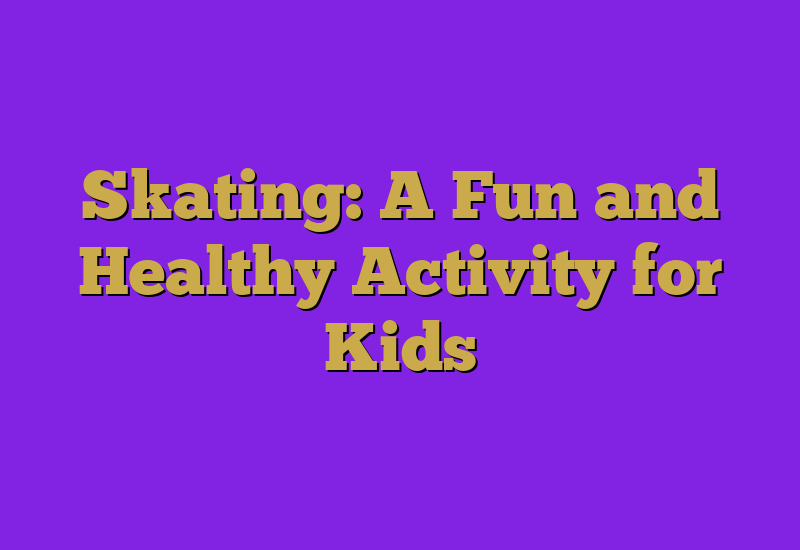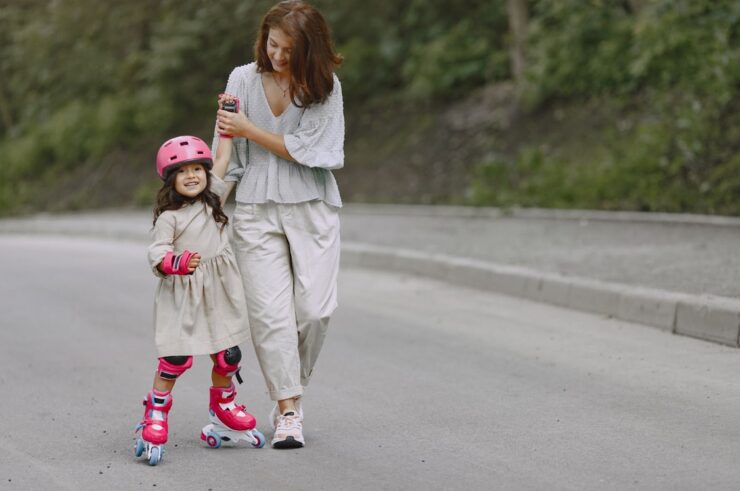In a world wherein children are frequently captivated via displays and virtual gadgets, locating ways to keep them bodily active and engaged in outdoor sports is more important than ever.
Skating, which encompasses various paperwork like roller skating, ice skating, and skateboarding, offers a thrilling and healthful pursuit that children can enjoy whilst reaping several physical and intellectual blessings.
In this article, we will delve into the sector of skating, explore the advantages it brings to children, and talk about the way to get started with safety in mind.
The Joy of Skating
Skating, in all its numerous bureaucracy, offers an interesting mix of fun, pleasure, and ability improvement that appeals to kids of every age.
Whether they are gliding on wheels or blades, youngsters have fun with the feeling of motion and the fun of mastering new tricks and strategies.
Skating additionally presents them with an experience of independence and freedom as they explore their environment in a unique way.
So bring your joy of skating today, lace up, hit the rink or park, and let the joy of skating take you on a ride filled with fun, fitness, and boundless adventures!
Physical Fitness
One of the most prominent benefits of skates is their substantial contribution to bodily health. Whether it’s roller skating at a rink, figure skating on ice, or cruising on a skateboard, these activities offer terrific cardiovascular exercise.
Kids’ hearts pump vigorously, and their lungs expand as they interact in skating, promoting common cardiovascular health.
Skating engages loads of muscle groups, such as the legs, middle, and top frame, depending on the sort of skating. This muscle engagement complements power, flexibility, and endurance.
Moreover, it could useful resource in keeping a wholesome body weight and fostering a lively lifestyle, decreasing the hazard of adolescent obesity.
Improved Balance and Coordination
Skating sports, whether or not on wheels or blades, require kids to develop and keep balance and coordination, which are important factors in their physical development.
Learning to control their moves, shift their weight, and navigate one-of-a-kind terrains hones their exceptional and gross motor competencies.
Balancing on skates also enhances proprioception, the body’s attention to its role and motion in the area. This heightened proprioception contributes to better typical coordination and spatial focus, which may benefit children in numerous components of their lives.
Mental and Emotional Well-Being
Skating isn’t just about bodily health; it additionally offers numerous intellectual and emotional benefits for youngsters.
As they exercise and best their capabilities, they benefit from a feeling of achievement and self-self belief. Overcoming demanding situations and achieving their dreams on wheels fosters an increased mindset, teaching them that dedication and attempt can cause improvement and mastery.
Skating also encourages a strong feeling of recognition and mindfulness. Children learn how to focus on their movements and the project at hand, offering a brief escape from daily stressors. This intellectual respite can help reduce tension and improve ordinary emotional well-being.
Social Interaction
Skating, whether solo or in a group, affords opportunities for youngsters to socialize and build relationships.
Skating with buddies, joining skating golf equipment or groups, or virtually placing out at local skate parks can foster an experience of community and camaraderie.
These interactions contribute to the social development of youngsters, assisting them in expanding important social abilities and a feeling of belonging.
Safety First
While skating is surely a laugh and useful hobby, protection has to usually be a top priority. Here are some vital safety recommendations to ensure a safe and exciting skating enjoy for kids:
Protective Gear
Ensure that kids wear suitable defensive equipment each time they skate. These tools consist of helmets, wrist guards, knee pads, and elbow pads. These items provide critical safety in the event of falls or injuries.
Skating Environment
Choose appropriate and secure places for skating. Encourage children to skate in particular regions like skating rinks, ice arenas, or skate parks. Avoid busy streets or regions with heavy visitors, as these can pose enormous safety dangers.
Supervision
Younger children, especially beginners, can also require adult supervision during their skating adventures. Adult supervision affords a further layer of safety, mainly whilst kids are getting to know the ropes of skating.
Basic Skills
Before hitting the streets or greater hard terrains, children should increase their essential skating talents. Starting with balance, basic moves, and stopping techniques ensures they may be properly organised for extra advanced skating activities.
Traffic Awareness
If kids can be skating in regions with vehicular traffic, it is important to educate them about traffic protection regulations.
Stress the importance of obeying site visitors alerts, searching each method before crossing streets, and wearing reflective clothing or equipment while skating at nightfall or in the dark.
Regular Maintenance
Ensure that skates, skateboards, or blades are in top operating condition. Regularly look at the equipment for any signs and symptoms of wear and tear and tear, free components, or damage. Properly maintained equipment appreciably reduces the danger of injuries due to gadget failure.
Getting Started with Skating
If you’re thinking about introducing your baby to the sector of skating, here’s a step-by means of-step guide that will help you get started out effectively and enjoyably:
1. Select the Right Equipment
The first step is to choose a suitable skating device for your toddler. Depending on their pastimes and age, these may be roller skates, inline skates, ice skates, or a skateboard. Ensure that the device is appropriate for his or her ability stage and nicely sized to provide comfort and help.
2. Protective Gear
Invest in incredible defensive gear, including a properly fitting helmet, wrist guards, knee pads, and elbow pads. These gadgets are non-negotiable for ensuring your child’s safety whilst skating.
3. Skating Venue
Identify a safe and appropriate skating area based totally on the chosen activity. For roller skating, seek out nearby skating rinks. For ice skating, look for indoor ice arenas.
Skateboarding can be achieved at skate parks, while inline skating is suitable for clean sidewalks, paths, or skating rinks.
4. Basic Training
Begin by way of teaching your toddler the basics of skating, consisting of stability, posture, and a way to flow and forestall.
Encourage them to practice these basics in a controlled environment, including an empty parking lot or a skating rink. Consider enrolling them in skating classes or classes if they’re beginners or want to improve their talents.
5. Gradual Progression
As your toddler becomes more snug with primary skating capabilities, regularly introduce them to more superior strategies and activities. This could include getting to know how to skate backwards, mastering tricks, or exploring unique skating terrains.
6. Safety Education
Educate your infant approximately safety policies and precautions, emphasizing the significance of protective equipment, proper system preservation, and responsible skating behavior.
7. Support and Encouragement
Finally, provide your toddler with masses of guidance and encouragement during their skating adventure. Celebrate their achievements, no matter how small, and be there to reinforce their self-assurance as they tackle new demanding situations.

Conclusion
Skating, in its diverse forms, is a dynamic and enjoyable pastime that offers a myriad of physical, mental, and emotional benefits for kids. Whether it is roller skating, ice skating, or skateboarding, children can experience the thrill of motion, enhance their physical health, beautify their coordination and stability, and gain a feel of feat.






